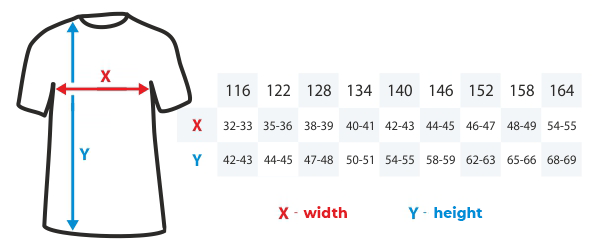FAQ

Image files for sublimation printing should meet the following specifications:
- format – 1:1 / bleeds as needed
- colour model – RGB
- definition – minimum 300 DPI
- file size – maximum 2 MB / larger files block printer buffers, which makes printing time considerably longer


The “plate method” is used to make overprints on ceramic tiles, granite, glass frames, sublimation crystals, and similar objects. It involves baking the print “through a plate”: a plate is put on the overprint, which lies on a silicone base in the press, and the heating element presses the plate.

When an ink level indicator light turns on, the corresponding colour button on the printer should be pressed for its carriage to slide out from the docking station. When the carriage is in the maintenance position, the button on the reset chip should be pressed and held down for about three seconds, and then the corresponding colour button on the printer should be pressed again, enabling the carriage to slide back into the docking station.
The ICC profiles for colour management for SAWGRASS sublimation gels can be downloaded from the producer's website www.sawgrassink.com > SUPPORT
Steps to make dye-sub overprints on mugs:
- prepare the project of mug overprint and print its mirror image on a sublimation printer;
- position the overprint on the mug and secure it with thermal heat resistant tape;
- the mug can be then baked at 180°C in a sublimation heat transfer press for mugs for 120-180 seconds;
Mugs can also be baked in Mini / Multi 3D Vacum heat presses, convection ovens, or furnaces, provided they are additionally secured with silicone clamps and baked at 180°C.
Overprints on the following objects can be made in MINI 3D VACUUM or MULTI 3D VACUUM heat presses /depending on the object’s size/:
- 3D cases for smartphones, tablets, etc. – custom made ‘lasts’ for specific models are needed;
- mugs – silicone clamps for even overprint pressure are needed;
- ceramic tiles;
- granite;
- glass frames and similar objects, e.g., glass clocks;
- plates;
- glasses – silicone modules are needed;
- small gadgets, e.g., lighters;
- sublimation crystals.
How to make dye-sub overprints on magnets:
- prepare the magnet overprint project and print its mirror image on a sublimation printer /project with an approx. 3-5 mm bleed/;
- position the overprint on the magnet and secure it with thermal heat resistant tape;
- bake the magnet in a flat press with strong pressure at 160°C for 100-120 seconds – do not overheat!
- If the magnet surface 'crumples', it should be gently smoothed with a felt or silicone doctor blade while still hot – see video.
How to make dye-sub overprints on jigsaw puzzles /cardboard/:
- prepare the overprint project and print its mirror image on a sublimation printer /project with an approx. 3-5 mm bleed/;
- position the jigsaw puzzle on the project and secure it with thermal heat resistant tape;
- bake the jigsaw puzzle in a flat press with strong pressure at 180°C for 120-160 seconds – do not overheat!
SubliPrint T-shirts contain 100% polyester, while CottonTouch T-shirts contain 50% cotton and 50% polyester.
A 2D case is a plastic or rubber case that comes with a metal plate on which the overprint is made. This type of overprint can be made in a flat press. The plate with the overprint is fixed on the case with the double-sided tape provided.
A 3D case is a plastic case for direct overprinting. A MINI 3D VACUUM or MULTI 3D VACUUM heat press is necessary to make this type of overprint, together with a custom made pad for the given model which prevents deformation caused by the high temperature required in the printing process.
How to make dye-sub overprints on granite:
- prepare the overprint project and print its mirror image on a sublimation printer /project with an approx. 10-15 mm bleed/;
- position the granite on the project and secure it with thermal heat resistant tape;
- bake the granite applying the 'plate method' in a flat press with strong pressure at approx. 180°C for 10-15 minutes, depending on the size of the granite tile;
- granite can also be baked in a MULTI 3D VACUUM heat press at the same temperature and time as in a flat press.
How to make dye-sub overprints on glass frames and sublimation crystals:
- prepare the overprint project and print its mirror image on a sublimation printer /project with an approx. 3-5 mm bleed/;
- position the object on the project and secure it with thermal heat resistant tape;
- bake the glass frame/crystal applying the 'plate method' in a flat press with light pressure at approx. 180°C for 7-10 minutes, depending on the size and thickness of the frame/crystal;
- glass frames and crystals can also be baked in a MULTI 3D VACUUM heat press at the same temperature and time as in a flat press.
Models and help files are included in product cards for illustrative purposes only. The position and size of overprints are merely suggestions. Each overprint can be made according to the client's personal preferences. The online store staff make every effort to keep all the posted descriptions, models, and help files as accurate as possible. However, due to the technologies used, batches of the same product may differ slightly from the description provided in the online store. Such differences are no basis for complaints.